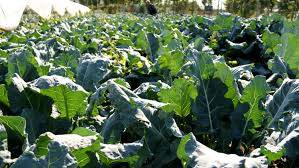Tips to Grow Cauliflower

Growing Cauliflowers is not hard at all, all it takes is some know-how and you will be on your way to harvesting your very own homegrown cauliflower. Nothing gives the home gardener more delight than to eat those fruits herbs and veggies they grew with their own hands.
This was my experience on many occasions as I labored in my garden on a daily basis and watched as those seeds sprouted, grew, produced flowers, and gave me a harvest which said to me that the time was well invested as I ate and enjoyed the fruits of my labor.
We will be discussing and looking at steps that are involved in growing cauliflower successfully.
Growing cauliflower plants
1. When planting Cauliflower select an area that gets 6 hours of sunlight. Make sure and use organic-rich soil.
2. Cauliflower is a cold-season plant so it is good to plant in winter, early spring, or fall.
3. When planting you can also install in raised beds. Each seedling should be spaced about 16-24 inches apart.
4. The Soil PH of cauliflower should be anywhere from 6.5-6.8 for healthy growth.
5. Cover the soil with mulch and keep moist at all times.
6. Adding organic fertilizers is a must to help in yielding a good crop.
7. Many varieties of cauliflower take at least 74-86 days before harvesting.
8. When the head or the white part of the cauliflower becomes 2-3 inches in size with rubber bands tie the outer leaves over the head of the plant to protect it from sun scorching.
9. Cauliflower will be ready to harvest in a week or two after the blanching process. Harvest cauliflower when the head is full, don’t leave off harvesting until the head splits.
How to harvest cauliflowers?
Harvest cauliflower when the head is white and firm, Cut the cauliflower head from the main stem. Some outer leaves should be left to provide protection for the head.
Cauliflower Pests
The main pest problem of cauliflower is cabbage worms that hide inside of the cauliflowers head. To control these worms it is best to use an organic insect control spray such as Neem oil or Bacillus thuringiensis (BT).
The moth that is a white butterfly lays its eggs on the underside of the leaves, they may lay as many as 200 tiny yellow eggs. These eggs hatch in about 7 days.
The larva feeds heavily for about 2 weeks then pupates introducing a new generation.
Remember before using chemicals read the label and follow as directed because the label is the law.
The final word
Growing cauliflower is so amazing and simple and the good part is, as a home gardener you will be giving nature a helping hand as you watch your cauliflower mature. Enjoy the fruits of your labor.
About the author
Norman loves being in the garden, both at home and for his job....
he is 'Natures Little helper' being outdoors, growing his vegetables and flowers from an early age.
Now having spent over 22 years in the profession he want to give some of his knowledge to others...
his vast array of hints and tips you will find scattered over this site will help you no end growing plants in your garden.

Thanks for this informative article! Are there particular zones that cauliflowers are best for? We live in a very damp climate, do you think they would do well there? We tried zucchini two years in a row now and they get moldy and stop growing, very frustrating. I would like to grow something a little more hearty.
Hello Corrine so good to meet you. Cauliflowers is best grown in zones 9-11. The plant itself loves full sun and the soil should be moist but to much water can cause root rot. It is best to grow this veggie in containers that way you can better control how much moisture it gets. Hope this helps, and please let me know how it goes.
Hey Norman,
I just ate some cauliflower yesterday. I cut some up with broccoli, carrots, and onions. Put a tad bit of olive oil, sprinkled some pepper and popped it all in the oven. It came out awesome.
I have a question about the organic insect control spray you use…the Neem oil and Bacillius thuringiensis. Have most corporations and farmers started using these sprays, or similar types of sprays? When I shop for produce almost every other day, do you think I’m eating harmful insect sprays?
Hello flowstash so good to see you. Growing and eating healthy is always good and the challenge with the food industry at this point is for food growers to use safer ways to grow crops, some have but we have a long way to go. Going organic may be more costly but it is a lot safer.
What is even better is to grow your own crops that way you are sure that they are safe. Hope this helps.